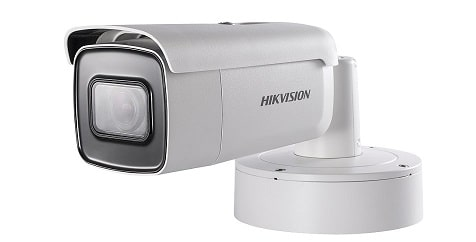One of the most important and desired aspects of a security camera is the resolution it can offer. Sydney Security Cameras will show you the difference, see our picture samples below. A camera's resolution is vital for providing usable images capable of identifying details. Resolution is measured in pixels, abbreviated to Megapixels. 1MP is equivalent to one million pixels. Thanks to advancements in technology and the subsequent drop in prices, currently we like to begin all of our conversations at 4MP - the Hikvision 4MP family of cameras, for example, are now priced lower than what a 1.3MP camera would have cost you a couple of years ago.

For the most situation, a higher resolution is always preferable. However, as a higher resolution video stream will require greater storage and bandwidth. The quality of images will dramatically improve as you increase the resolution, as a result, a face or number plate will contain a greater number of pixels-per-inch, allowing finer details to be picked out and recognised.
Many customers aren't aware that a 4MP camera actually provides a significantly higher number of pixels than the 1080p TV and monitor they're typically used to dealing with. This is further compounded by the fact that most cameras will automatically resize their stream display in order to fit on a monitor that doesn't support the camera's resolution - for example, you wouldn't be able to view the entire 2688 x 1520 stream on a monitor only capable of outputting 1920 x 1080. It is almost always possible to view the stream at its native resolution, but you'd have to scroll around to view the entire image as some of it will be off-screen. The benefit is seen when zooming in on a distant item of interest.

Any analog video signal will be encoded and digitised, once processed by Digital Video Recorder or Encoder, the maximum resolution of a conventional analog camera can provide is D1, equals to 720 x 576 pixels, 414,720 pixels or 0.4 megapixels in PAL mode.
The picture above is the D1 Resolution.

When we talking about Full High-Definition and High-Definition, people always hear 1080P and 720P, these two numbers refer to the horizontal resolution. 720p resolution provides images 1280 x 720 pixels, total 921,600 pixels, this is typically what we call High-Definition resolution, but technically less than one megapixel. 1080p resolution provides images 1920 x 1080p equals to 2.1 megapixels. The picture above is 1080P/2MP Resolution.

4 Megapixel IP Cameras are network-based security cameras that are capable of providing video resolutions up to 2560 x 1440 pixels which are 30% greater than 2MP/1080p. The picture above is 4MP Resolution.

For instance, a 6MP CMOS sensor captures roughly fifty percent more detail in an image than a 4MP sensor and double what a 3MP sensor has, also four times that of a 1.5MP sensor. For images viewed on TV, computer monitor or even a smartphone, this may not matter but it has a huge impact on those that actually want to print their images out. The picture above is 6MP Resolution.

4K/8MP security cameras have extremely high resolutions of 3840 x 2160 pixels, meaning there are 3840 horizontal pixels by 2160 vertical pixels, resulting in an overall 8,847,360 pixels overall. That is double 2K resolution security cameras which are approximately 2688 x 1520, resulting in 4MP. The picture above is 4K/8MP Resolution.









